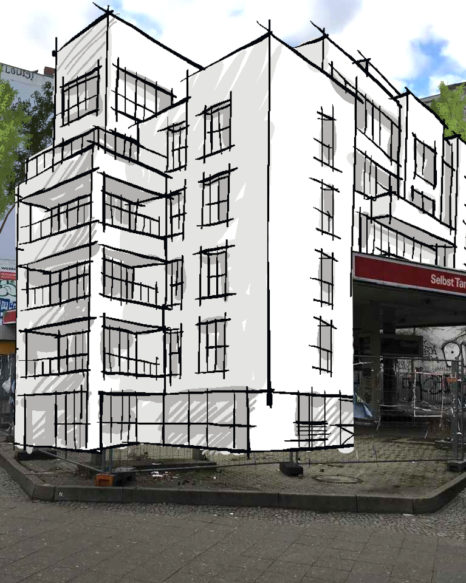Especially in cities, motorised traffic is noticeable in the air pollutants, noise, traffic accidents and soil sealing it causes. But it is also linked to a lack of physical activity among children and adults in Germany, and this is in part due to their limited active mobility  .
.
Active mobility is thus not only essential for reducing the negative effects of motorised traffic, but also for individual health and well-being. The direct effect on subjective well-being is well-demonstrated by a study in England . According to the study Mobilität in Deutschland [Mobility in Germany], walking is the most popular form of locomotion (Nobis/Kuhnimhof 2019: 127 ff). However, because pedestrians are both slower than other road users and are not protected by a “buffer zone”, they are particularly exposed to the environment. External factors such as safety, weather, the design of public spaces, and accessibility are therefore particularly important for pedestrians. Factors that determine the quality of the pedestrian experience and access to public space matter because walking is more than simply moving from A to B.
This research project takes an experimental approach to investigate how the quality of the urban experience can be improved, how urban spaces for citizens can be created, and what steps can be taken to enable forms of mobility beneficial to human health. Three real-world experiments were conducted in Berlin featuring temporary interventions in the design of street areas and traffic routes.
In Berlin Charlottenburg , an intersection was transformed into a city square for five weeks in the fall of 2020; Lausitzer Platz in Kreuzberg was successively converted into a permanent pedestrian zone in the winter of 2020; and in Schöneberg parklets were installed on a street that was closed to motorized traffic in the summer of 2021.
Participatory formats and co-creative design processes were used to involve neighbours and generate buy-in. These (temporary) transformations of public space will be evaluated with the help of traffic counts, household surveys and interviews etc..
Julia Jarass examines these experiments in order to understand how the transformation of public space unfolds, how newly created spaces are utilized and accepted, and the roles of public agencies and policymakers. The outcomes pinpoint opportunities and levers that are crucial for enabling mobility transitions within the city.
The results will be embedded in the context of international examples of pedestrian-friendly infrastructure (e.g. superblocks in Barcelona, car-free Zermatt, pedestrian zones in Ghent).








